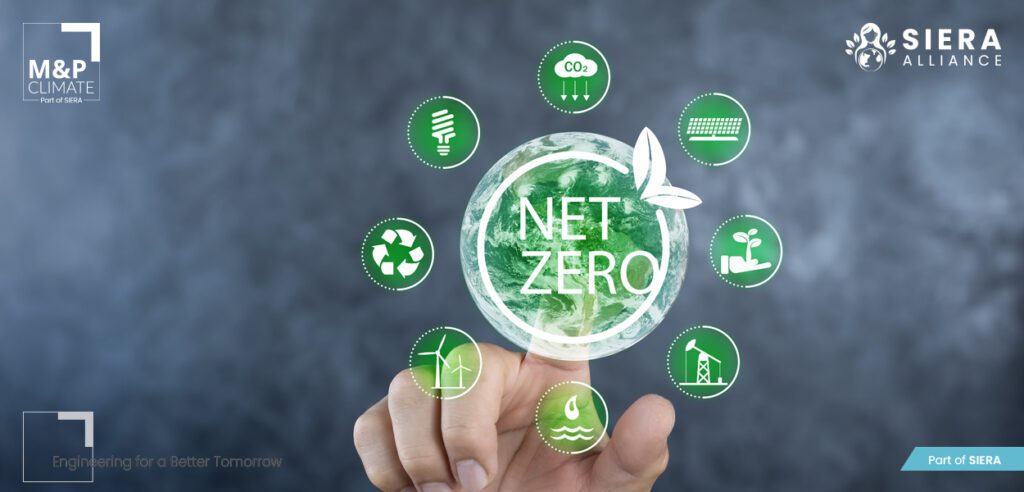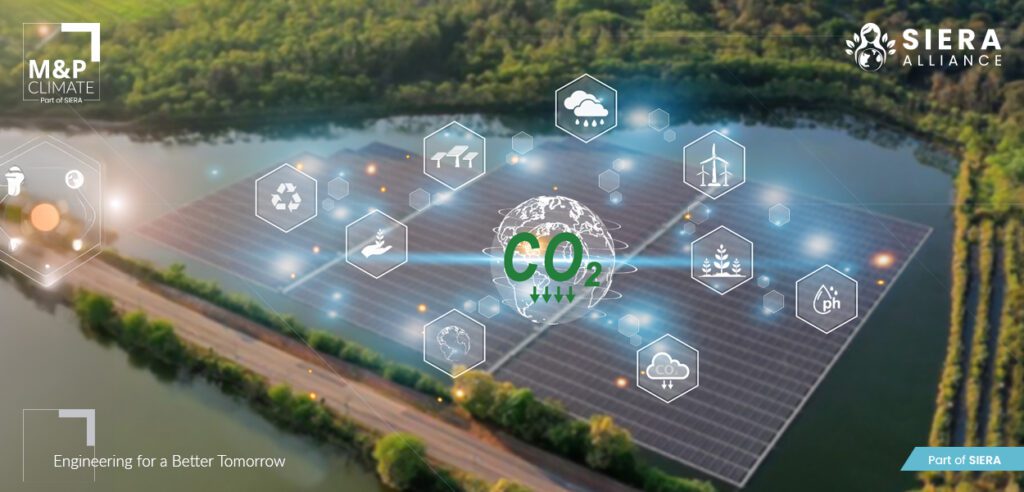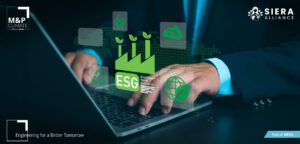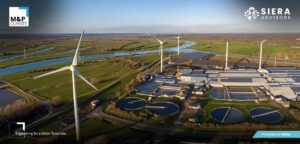As the urgency to tackle climate change intensifies, businesses and governments alike are pursuing comprehensive decarbonization strategies to reduce their carbon footprint, achieve net zero goals and drive sustainability. But what exactly is a decarbonization strategy – and how can organizations implement one that effectively delivers emissions reduction and long-term resilience?
In this article, we explore the core components of a decarbonization strategy, highlight actionable steps for building a tailored roadmap and showcase why integrating sustainability into every layer of decision-making is essential for a net zero future.
Understanding Decarbonization: A Foundation for Sustainable Enterprise
A decarbonization strategyis designed to reduce greenhouse gas (GHG) emissions across an organization’s operations, supply chains and product lines in order to minimize environmental impact and contribute to limiting global warming to 1.5° C, in line with the Paris Agreement.
This approach isn’t restricted to large emitters in the manufacturing or tech sectors – it’s relevant to all industries. Whether it’s switching to renewable energy, reengineering production processes or investing in carbon removal, a decarbonization strategy helps organizations align with climate targets while unlocking economic, environmental and reputational benefits.
Why a Decarbonization Strategy Matters More Than Ever
The European Green Deal and national climate laws across the EU have made decarbonization a regulatory necessity, pushing both public and private sectors to create roadmaps for net zero emissions by mid-century. However, the risks and incentives aligned with decarbonization are not limited to mere compliance.
Climate Risk Is a Business Risk
Extreme weather events, supply chain disruptions and regulatory pressures are escalating. Climate-related financial risks now appear on boardroom agendas, making emissions reduction not just a sustainability issue, but a risk management imperative. Organizations that get ahead of the curve now will effectively futureproof their operations against the growing physical and transitional risks linked with climate change.
Stakeholder Expectations Are Rising
With eco-conscious operations rising on the agenda of consumers and investors, sustainable businesses can unlock reputational advantages and green financing opportunities. Organizations without a transparent decarbonization plan risk losing market share, capital and talent to their more sustainability-oriented competitors.
Unlocking Innovation and Efficiency
Reducing emissions drives innovation. From energy-efficient manufacturing to AI-driven logistics optimization, carbon footprint reduction can improve productivity and lower operational costs, improving the efficiency of sustainable organizations.

Key Components of an Effective Decarbonization Strategy
To build an effective decarbonization strategy, organizations must go beyond pledges and create detailed, data-driven action plans. The following components are essential:
Carbon Footprint Assessment
Begin with a comprehensive GHG inventory across Scope 1 (direct), Scope 2 (indirect) and Scope 3 (value chain) emissions. This provides a baseline to measure organizational progress and identify priority areas for decarbonization efforts.
Example: A logistics firm might find that 70% of its emissions come from third-party freight providers (Scope 3), necessitating collaborative efforts across the supply chain.
Science-Based Targets
Set ambitious yet achievable emissions reduction targets aligned with the Science Based Targets initiative (SBTi). These targets define how much and how quickly an organization must cut emissions to contribute to the net zero transition.
Integration into Business Strategy
Decarbonization must be embedded in corporate governance, investment decisions, product design and procurement. Without strategic alignment across the business, sustainability strategies risk being siloed or superficial.
Tip: Make sustainability a KPI across leadership roles, with clear accountability and incentives for achieving climate targets.
Foundational Levers for Achieving Decarbonization
Identify and prioritize emissions reduction measures such as:
- Renewable energy sourcing (solar, wind, green hydrogen)
- Energy efficiency upgrades (HVACs, insulation, smart controls)
- Process innovation (electrification, low-carbon materials)
- Circular economy models (reuse, repair, resource recovery)
- Sustainable mobility (EV fleets, public transport incentives)
- Nature-based solutions (reforestation, wetland restoration)
Each lever must be evaluated for cost, feasibility and emissions impact but they provide a thorough overview of the facets through which organizations can channel their decarbonization efforts.
Technology and Data Integration
Digital tools such as carbon accounting software, IoT sensors and AI-based forecasting enable real-time tracking and predictive analysis. These systems provide the accuracy needed for effective decision-making and transparent stakeholder reporting.
Stakeholder Engagement
A decarbonization strategy must be co-developed with internal and external stakeholders. This includes employees, suppliers, investors and local communities. Transparent communication builds trust and drives collective action.
Case in Point: The automotive sector’s transition to electric vehicles was accelerated through public-private partnerships and coordinated investments across the value chain.
Monitoring, Reporting and Continuous Improvement
Implement regular progress reviews, adjust strategies based on results and report transparently through frameworks such as the Carbon Disclosure Project (CDP). Continuous learning ensures adaptability and long-term resilience.


Building the Roadmap: A Step-by-Step Guide
Step 1: Baseline and Materiality Assessment
Map your emissions profile and identify climate-related risks and opportunities. Conduct a double materiality assessment to consider both financial and environmental impact.
Step 2: Set Strategic Goals
Define your net zero strategy, including short, medium and long-term targets. Ensure these goals are science-based and cover all emission scopes.
Step 3: Design Action Plans
Develop sector specific decarbonization pathways, prioritize high-impact interventions and allocate resources. Include pilot projects and low-hanging fruit for early wins.
Step 4: Engage and Educate
Build internal capacity through training, create green teams and empower innovation. Foster a culture where sustainability is rewarded at every level of the organization.
Step 5: Implement and Scale
Roll out initiatives, monitor KPIs and ensure cross-departmental collaboration. Use digital dashboards and ESG reporting tools for real-time oversight.
Step 6: Report, Review, Repeat
Publish annual emissions reports, verify progress through third parties and refine your strategy as technologies and regulations evolve.
Decarbonization in Action: Real-World Examples
- Siemens achieved carbon neutrality at its production sites in Germany through renewable energy and energy efficiency upgrades.
- Unilever cut its manufacturing emissions by 65% since 2008 by redesigning factories and optimizing logistics.
- EUTECH-powered initiatives are helping cities and industries integrate climate-smart infrastructure, clean technologies and ESG frameworks to accelerate their transition.
These examples demonstrate that decarbonization is not only feasible – it’s already delivering economic and environmental value across sectors.
Moving Toward Net Zero: From Compliance to Competitive Advantage
Climate action is a defining challenge of our time – but it also presents an opportunity. As regulations tighten and climate impacts intensify, early adopters will be best positioned to lead through sustainable transformation.
By building a robust decarbonization strategy, organizations can reduce emissions, enhance competitiveness and contribute to a climate-resilient, net zero future. Whether you’re an SME or a multinational, the path to net zero can begin today – with leadership, vision and collaboration at its core.








